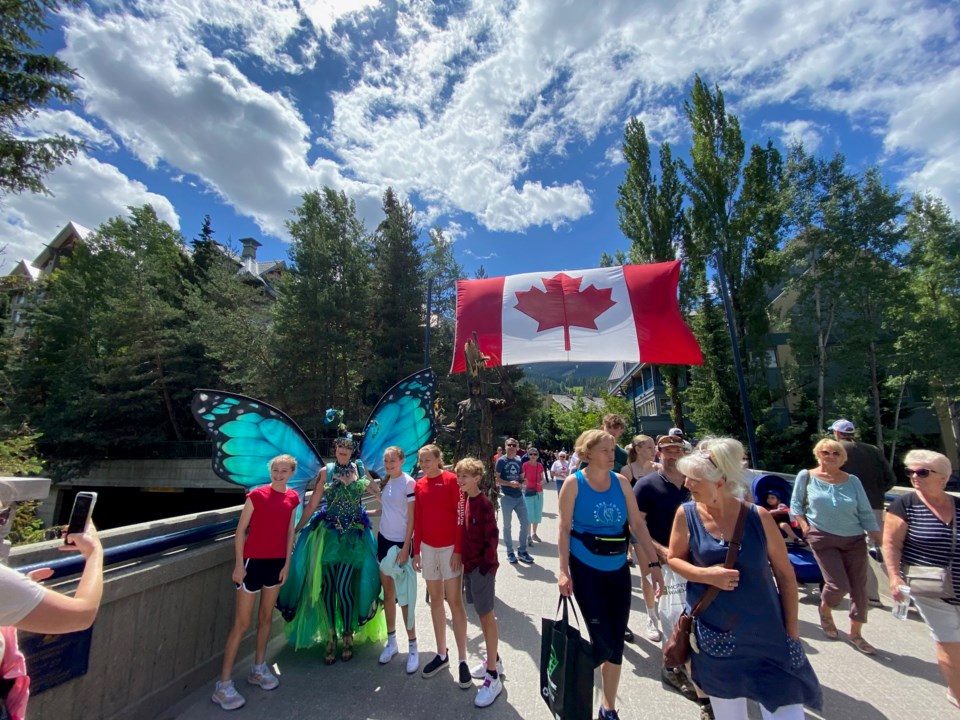There’s a term worth revisiting when the weight of life and the universe gets to be too heavy (as it must for all of us, from time to time).
Though it has grown in popularity since it first started popping up more than a decade ago, you won’t find it in most normal dictionaries—it was made famous by author John Koenig in his New York Times bestseller The Dictionary of Obscure Sorrows.
The word is sonder, and it refers to the realization that each random passerby is living a life as vivid and complex as your own—one filled with their own unique problems and worries, triumphs and tribulations, loves and losses.
As defined in a TED Talk profile of Koenig, sonder refers to the countless, epic stories that “continue invisibly around you like an anthill sprawling deep underground, with elaborate passageways to thousands of other lives that you’ll never know existed, in which you might appear only once, as an extra sipping coffee in the background, as a blur of traffic passing on the highway, as a lighted window at dusk.”
After all, we are each the main character of our own stories, feeling our way through them at our own pace. Sonder reaches for a deeper understanding of existence.
It can be an expansive, mind-altering exercise—if you take the time to slow down and embrace it every now and again.
And so it was that I made my way to Whistler Village this Canada Day, hoping to ward off that other, potentially more dangerous philosophical theory that begins with S—solipsism, or the idea that only one’s mind is sure to reliably exist.
I sat with my coffee, watching the scores of people trundle past.
Whistler Village is one of the best spots for people watching, as you often get the full range of humanity flowing past in the course of an hour or two.
An older lady walks a heavy-duty mountain bike, alone (is she coming or going? Which trails is she riding and how hard does she send it? What was her last injury, and how long did it take to rehab?), while a younger mom goes the other way, with a baby in a stroller and an impossibly happy-looking dog (is she content in these maternal moments, or is this morning stroll with the baby and the dog as stressful as I’m perceiving it? I decide it’s likely a bit of everything all at once, and leave it at that).
But sonder is not inherently a passive exercise—it requires effort, and a depth of empathy not always deployed when we’re sweating from task to daily task. You have to be simultaneously patient and thinking with a sense of curious urgency for it to really take its full effect.
A young couple passes by, both covered in tattoos (which are their favourite, and what stories would they tell if asked to explain their meaning?), followed closely by an elderly couple holding hands (what was their last big argument about? I bet he worked at a bank).
Suddenly, two large, Canadian men with big bellies interrupt that thought, as they come parading up the middle of the stroll, clad in their Canada Day best—all red and white, with funny hats and Canadian flags attached to hockey sticks—followed shortly after by a man in a black T-shirt that says only “SHIT SHOW SUPERVISOR” in large, white lettering (the less time spent sondering on this fellow the better, I decide—but it is reassuring to know the supervisor is on hand should things really go sideways).
Directly in front of me, a small child stops to pick up a dropped hotel key—then throws it on the ground after being admonished by his mother. I imagine a hapless hotel guest standing outside their room, fumbling through their pockets, then shaking both fists at the sky in comical frustration.
A man in an “I stand with woman of Iran” T-shirt passes by—a stark reminder of political instability, civil unrest, and the conflicts of all stripes still taking place far beyond Whistler’s comfortable, insulated boundaries.
I consider the intricacies of mass protest in Iran for several minutes, until the fluffiest Corgi I have ever seen saunters past, and I make a mental note to search “fluffy corgi” when I get home (highly recommend).
By 11:30 a.m., the foot traffic is picking up considerably, so I make my way up the Village Stroll, head full of the imagined thoughts of others, heart probing the impossible depths of our collective humanity and the human experience.
I stop to watch a Treeline Aerial performance, and local artists like Taka Sudo doing live paintings in Village Square.
Further up the Stroll, Monty Biggins, Kostaman and their crew entertain a crowd of Canada Day visitors in Mountain Square.
Like many, I was disappointed in the lack of a traditional Canada Day parade again this year, but I appreciated my time exploring the Resort Municipality of Whistler’s People’s Parade, and the sense of local community I found there.
That said, I still hope Whistler’s traditional parade returns next year.
According to Statistics Canada, our country’s population hit 40 million for the first time ever in mid-June—40 million main characters, all of them navigating their complex narratives at their own pace.
All of them hoping for peace and prosperity; a fulfilling job and a good home to call their own.
In the years ahead, Canada must come to terms with a growing list of challenges around things like inflation, cost of living, housing, food security… the list goes on.
The answers will never be readily apparent, or agreeable to all.
But starting from a place of empathy and understanding is never a bad thing—even if it takes a little more work from each of us.




